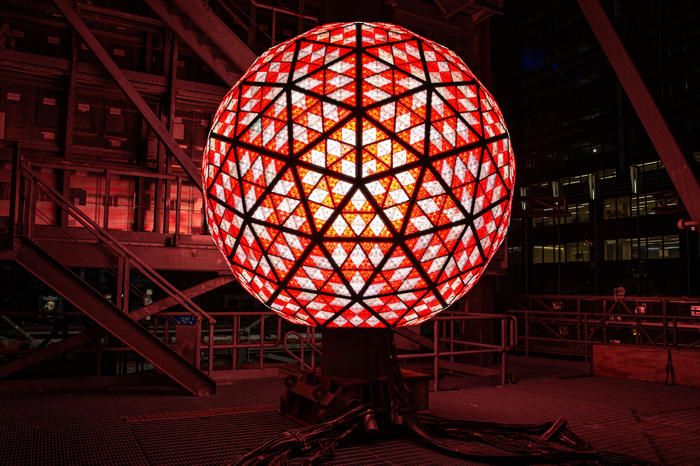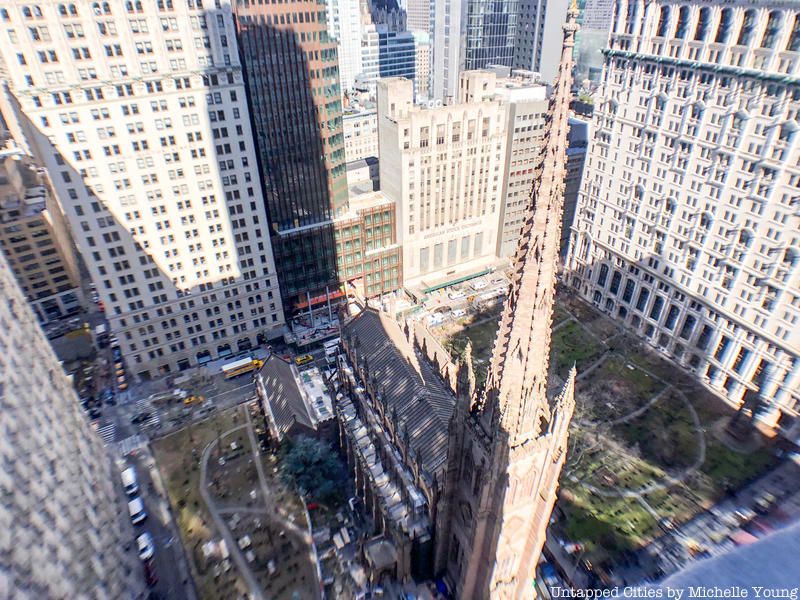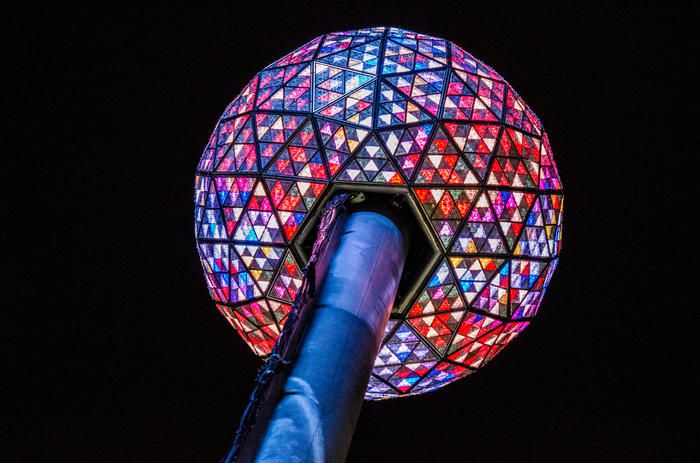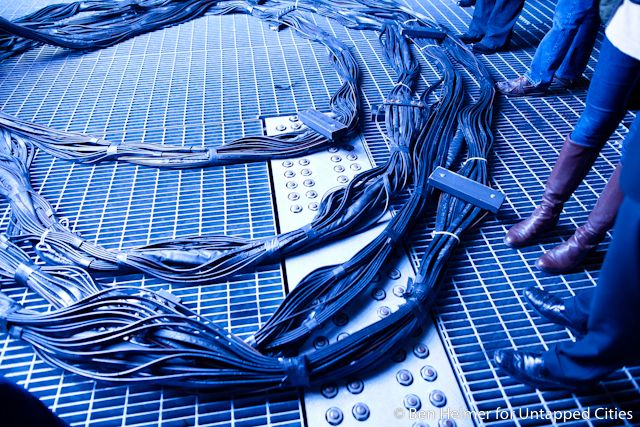NYC’s Forgotten ‘War on Christmas Trees’
Discover how an obscure holiday crackdown affects festive street vendors today!



It’s that time of year again: the flashing New Year’s Eve ball waiting to descend from the top of One Times Square, upbeat performances from celebrities, and vibrantly colored confetti raining from the sky. Every year, millions of people watch the New Year’s Eve ball drop in Times Square, on television or in person. Though the New Year’s Eve ball drop is one of New York City’s most famous traditions, many don’t know how this worldwide event came to be. So just in time for the new year, here are our favorite secrets of the New Year’s Eve ball drop in Times Square.

While the current New Year’s Eve ball hangs out at the top of One Times Square all year long, two old New Year’s Eve balls sit in the building’s basement in the Ball Vault. The Millennium Ball (used from 12/31/1999 to 12/31/2005) and the Centennial Ball (used on 12/31/2006, the 100th anniversary of the ball drop) are stored 50 feet below the building, even beneath the subway tracks. A New York Times article from 2009 also reported that there were other New Year’s Eve-related items in the vault such as “silly-looking hats from 1976” and t-shirts from 1997. Another historic ball is stored at the Atlanta headquarters of Jamestown L.P., the company that owns One Times Square.
One Times Square is one of the emptiest yet most profitable buildings in Midtown Manhattan. Rather than renting out space to various tenants, the building’s owners make money off its billboards, which are seen by millions on New Year’s Eve. One of the few occupied spaces within the building is the New Year’s Eve headquarters on the 22nd floor. There, plans are arranged for the annual New Year’s Eve celebrations.

Before Times Square became the epicenter of New Year’s Eve festivities, the area near the base of Trinity Church was filled with celebratory noise and large crowds on the night of December 31st. The church, located at 75 Broadway in Lower Manhattan, has a tall and narrow steeple that forces its bells’ sounds outward rather than inwards and into the sanctuary. Because of this, the bells were rung at midnight to announce the new year. During some years, as many as 15,000 people would show up.
In his book Island of Vice: Theodore Roosevelt’s Quest to Clean Up Sin-Loving New York, Richard Zacks provides a detailed description of the celebration that ushered in 1896. “The people… waited for the famed church bells to peal in the New Year with a dozen-tune hourlong medley starting at 11:30 p.m. and climaxing with ‘Happy New Year’ at midnight,” he writes. Peddlers would sell five-cent tin trumpets, penny kazoos, Dutch watch rattles, slide whistles, and horns called “laughing hyenas.” Teenage gangs pulled petty pranks, and people freely passed along liquor bottles since public consumption of alcohol was legal. Zacks writes, “At the stroke of midnight, the world-famous chimes-man played ‘Happy New Year to Thee’ and then later added ‘Yankee Doodle Dandy’ and ‘Home, Sweet Home.’”

You might be surprised to know that the famous New York Times owner Adolph Ochs started the New Year’s Eve tradition of dropping the ball in Times Square. The New York Times moved into One Times Square in 1903 when the surrounding neighborhood was known as Longacre Square. It was renamed Times Square in honor of the company’s big move in 1904.
To promote the new headquarters, the New York Times held a New Year’s Eve event (ushering in 1904) on December 31, 1903. The main attraction was a fireworks show, set off from the building’s roof at midnight. This tradition continued until 1907, when the city banned the fireworks display. Ochs wanted to maintain the attention-seeking celebration in Times Square. At the suggestion of the newspaper’s head electrician, Walter Painer, Ochs arranged for a 700-pound “time ball” with lights to be placed atop the headquarters for the New Year’s Eve celebration. The Western Union building had used a similar tactic to attract crowds. Though the Times moved out of the building about ten years later, the tradition continued and lured away crowds from celebrations at Trinity Church.

Every year, 192 of the New Year’s Eve ball’s 2,688 triangular crystal panels are replaced. This is because each year, The House of Waterford Crystal creates a special design that symbolizes “a theme of global aspiration whose value is universally treasured.” The tradition began in 2014 and will continue into 2023. The first theme was the “Gift of Imagination,” which featured a design of intricate wedge cuts that created a kaleidoscope effect.
For 2023, the theme is the “Gift of Love.” The new design features a circle of overlapping and intertwined hearts. The new design will sit among designs of years past, including the Gift of Happiness, Gift of Goodwill, and Gift of Harmony. The remaining 1,152 triangles are the Gift of Imagination design, a series of intricate wedge cuts that are mirrored reflections of each other.

The aforementioned New York Times electrician got the idea for the New Year’s Eve ball drop after seeing Western Union’s own metallic time-ball drop from a spire atop the nearby building. Unlike the Times Square ball, Western Union’s wasn’t just for show. Rather, the ball was dropped every day at noon so that pedestrians and ship captains could synchronize their clocks and watches.
The whole concept of a “time-ball” dates back to as early as 1833 when the first one was built on top of England’s Royal Observatory. The ball would drop at one o’clock in the afternoon every day, letting the captains of nearby ships accurately set their chronometers. Nearly 150 public time-balls were believed to have been established worldwide (though most haven’t survived) for such time-telling purposes after the Royal Observatory time-ball went up. In 1884, someone actually proposed to install one at the top of the Washington Monument. You can find another time-ball (though not functioning) in New York City atop the Titanic Memorial at the South Street Seaport.

The only years the ball hasn’t dropped since 1907 were 1942 and 1943. During these years, the New Year’s Eve ceremony was suspended as part of the wartime “dimout” of New York City lights. These dimouts were done to protect the city from Axis bombings. According to the New York Times, though there weren’t any continuous nightly dimouts in New York City, there would sometimes be blackout drills. In 1942, the Army said that New York City’s glow silhouetted offshore ships, making them easy targets. Thus, the advertising signs in Times Square had to go dark. The original Penn Station‘s skylight windows were also painted black to block light from emitting from the building.
Despite the dimout, huge crowds still gathered in Times Square on New Year’s Eve. Instead of the usual flashy and raucous partying, the new year was welcomed instead with a minute of silence followed by the sounds of chimes from sound trucks parked at the base of One Times Square.

The Times Square ball has changed drastically since its 1907 debut. The original ball was just 700 pounds, had a five-foot diameter, and was covered in 100 twenty-five watt light bulbs. It was constructed out of iron and wood. In 1920, a new ball made entirely out of wrought iron replaced the original. A lightweight version made of aluminum came in 1955 and was used through the 1980s, when the ball was decked out in red bulbs and given a green stem to look like an apple.
A few more different balls were used throughout the 1990s and early 2000s. The current ball was first used in 2009. Today, the ball weighs 11,875 pounds, has a 12-foot diameter, is covered in 2,688 Waterford crystals, and is lit up by Philips Luxeon LED lights. Learn more about each of Times Square’s New Year’s Eve balls here!

For the first 87 years of the Times Square New Year’s Eve ball drop, the balls were actually lowered by hand. In 1907, the first New Year’s Eve ball was lowered by a team of six men using rope. According to Jeff Strauss in an interview with the New York Times, this system was actually used all the way up until 1995, when the ball drop was first computerized.
In addition to controlling the dazzling light display on the ball, a computer controls the actual descent as well. What used to take a crew of six men is now accomplished with the push of a button. The ball drop is electronically timed with a laser-cooled atomic clock in Boulder, Colorado. It takes the ball 60 seconds to complete its 77-foot journey down the pole.

The confetti that rains down after midnight on New Year’s Eve isn’t just regular confetti. These colorful shreds actually have wishes for the coming year from visitors around the world written on them. People can write these wishes either via the virtual Wishing Wall on the Times Square Alliance website or by visiting Times Square Plaza by December 29th and jotting down your wish in person.
All of that confetti makes quite a mess, and cleaning it up is no easy feat. Roughly 3,000 pounds of confetti blanket the streets of Times Square after the New Year’s Eve ball drop. It takes a crew of more than 200 workers equipped with mechanical brooms, backpack blowers, collection trucks, and old-fashioned hand brooms to clean up the mess!
It’s no surprise that the Times Square ball drop set a precedent for other versions of New Year’s Eve ball drops around the country. However, what is surprising is how bizarre some of the celebrations are.
For instance, Port Clinton, Ohio, is home to the Walleye Drop. For more than 20 years in Port Clinton, the “Walleye Capital of the World,” a 20-foot long, 600-pound fiberglass walleye is dropped at midnight. There’s also the Moonpie drop in Alabama, a Guitar drop in Memphis, and the Idaho potato drop in Boise.
Next, check out The Top 10 Secrets of Times Square NYC and The Evolution of the New Year’s Eve Times Square Ball in NYC
This article was written by Stephanie Geier and Nicole Saraniero
Subscribe to our newsletter